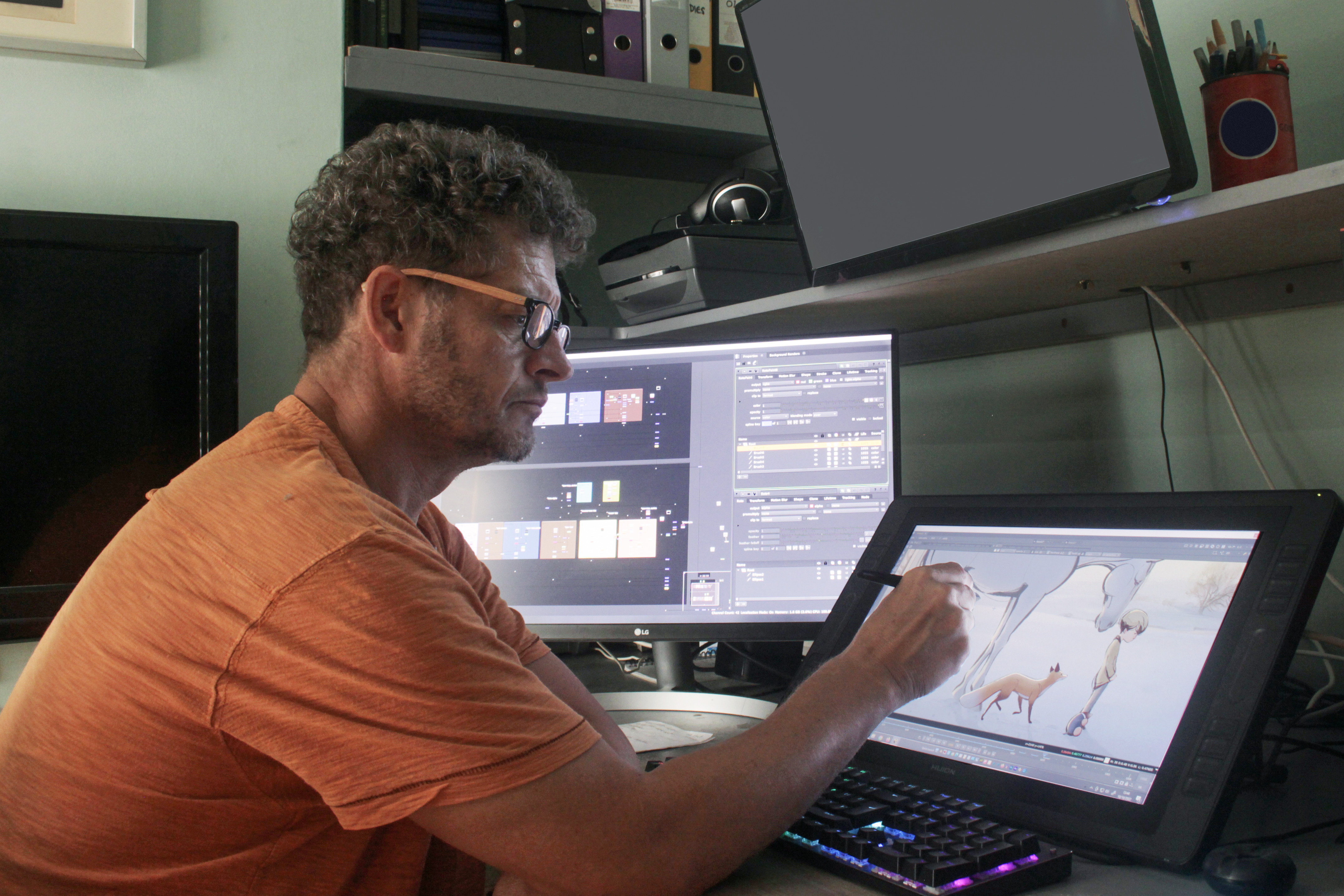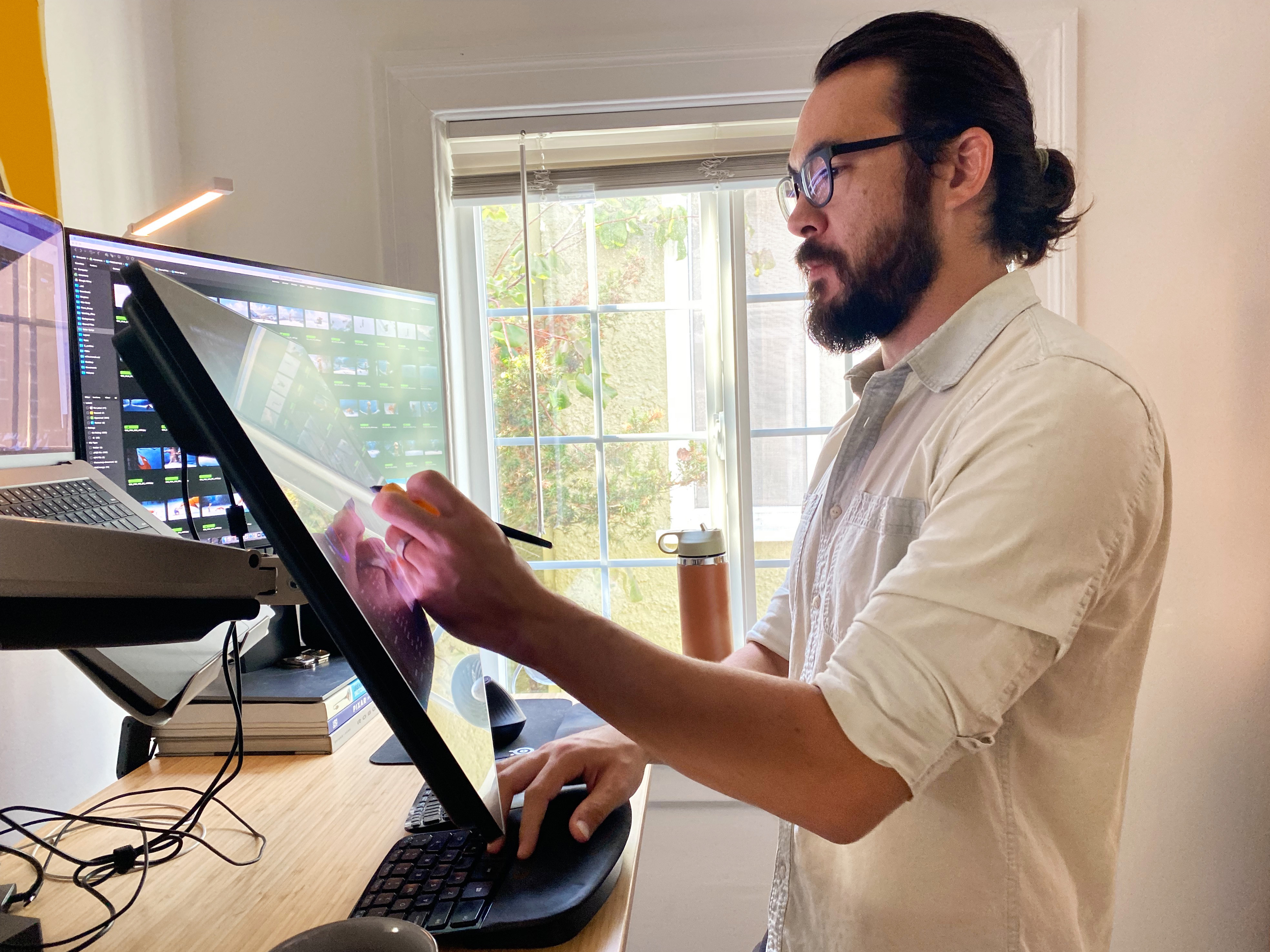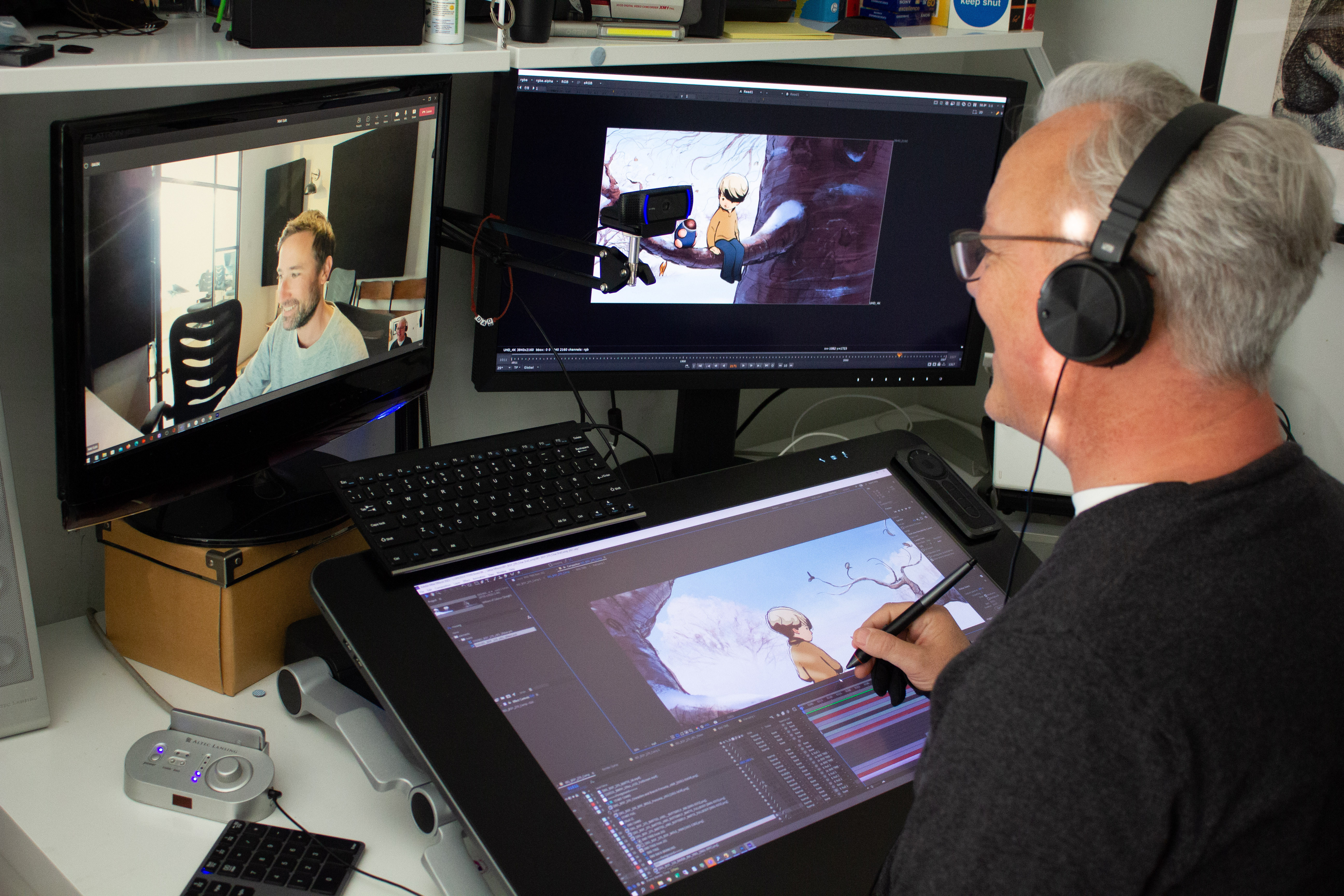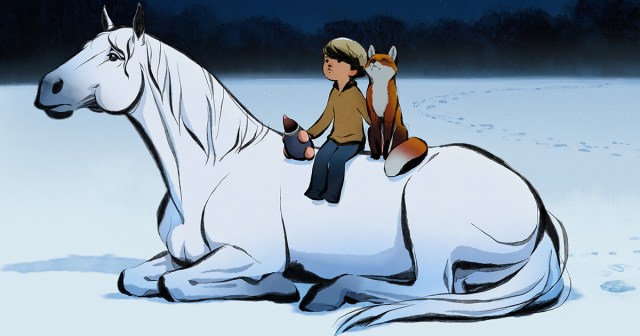TL;DR
- Based on the bestselling illustrated book by Charlie Mackesy, the Oscar-winning animated short film “The Boy, The Mole, The Fox and The Horse” has been described as “‘The Little Prince’ for a new generation.”
- The international animation team that brought the film to life spanned 20 different countries, with artists working remotely due to the pandemic.
- The filmmakers wanted to retain the signature style of Mackesy’s ink and watercolor illustrations, with Mackesy closely involved in the process to ensure that the film stayed true to his vision.
LEARN MORE AT NAB SHOW: Resilience, Remote Collaboration and Creativity on “The Boy, the Mole, the Fox, and the Horse”
The Oscar-winning short The Boy, The Mole, The Fox and The Horse is like receiving an “emotion bomb” when you first see it. If you have any pent-up sentiment left over from the pandemic, Charlie Mackesy’s animated story of a young boy and his animal friends might extract it from you, so be warned.
The award-winning animated story, now streaming on Apple TV+ and the BBC iPlayer, is the realization of Mackesy’s beautifully rendered ink and watercolor drawings, which were immortalized into an illustrated book that ended up topping the bestseller lists in both the United States and in the UK.
Filmmakers then approached Mackesy to take the story to the next level, but how do you turn heavily characterized pencil drawings into moving images and keep the signature style of the artist?
Initially, Mackesy’s intentions were less about the bottom line than more spiritual and Christian ambitions. He explained to Ryan Fleming at Deadline that helping people was his driving force and he thought the film would add to that.
That the book even became a hit shocked him, Mackesy said. “When the book came out, I got so many emails, like thousands of emails, telling me how the book had moved them or helped them, particularly in the pandemic,” he said. “I felt like if the book had done that, could a film reach people in the same way?”
He soon had his answer. After reading Mackesy’s book in 2019, producer Cara Speller said she “completely fell in love with it and got in touch with Charlie and his partner, Matthew Freud, and talked to them about what we could potentially do in turning it into a short film.” After a discussion with the creators, Speller contacted Peter Baynton, who was ready to join as director.
READ MORE: ‘The Boy, The Mole, The Fox And The Horse’ And The Team That Brought Charlie Mackesy’s Book To Life – Contenders Film: The Nominees (Deadline)
Speller told Jérémie Noyer at Animated Views how important it was to have Mackesy front and center in the process. “It was always really important to me right from the start that Charlie be at the center of any team that we put together to make the film. You can tell immediately from the book that he has incredibly strong instincts about what works. To me, it didn’t make any sense to try and make that without having him so closely involved.”
The animation team worked remotely because of COVID, with a shared goal of creating a look that reflected as closely as possible the drawings in the book, which were ink and watercolor. “We wanted to make those drawings basically move but keep the spirit of the fluidity of the ink and the line and the varying thickness of line,” Mackesy says.
Director Peter Bayton underlines the connection between Mackesy’s style and his animation team, “Charlie’s drawing is underpinned by a great knowledge of anatomy. So, even though he draws extremely quickly and quite impressionistically, you can tell he knows horse or boy or fox anatomy so well. For the mole, it’s a little bit different.
“It was important not to lose that lovely loose quality and make things stiff. So, we came down to a system where we would animate quite tightly on detailed models, and then, on the ink stage, we encouraged the artists to find that looser way of inking. It was about finding that very fine line that sort of drifts around the characters.”
“It was a very international crew,” noted Speller, “coming from 20 different countries. We started the work on the film in the middle of the Pandemic, so everyone was working remotely from their homes. We built the team in the same way you build any team on a production. You’re always looking for the most talented artists you can find; it doesn’t matter where they are in the world, as long as you think they’re the right fit for the project and for the team.”
READ MORE: A kind interview with the creators of The Boy, The Mole, The Fox And The Horse (Animated Views)
Frank Gladstone, executive director of ASIFA-Hollywood (the International Animated Film Society), pushed the team for more production details in an all-guild screening.
“The style warrants movement,” said Gladstone, “but how did you achieve it? The line halo that goes around the drawings, how is that translated to movement?” Director Pete Bayton explained the significance of the halos: “Charlie describes those lines as thinking lines and they’re very characteristic of his drawings,” he noted.
“The process is that we start with pencil rough character animation, to define the performance and then it goes through a clean-up stage where we adjust the model where everything looks like a model and then we go to an inking stage where we do these key ink drawings and at that point we would add these lines, these thinking lines or ‘thinkies,’” he continued.
“It was a careful balance as sometimes that would feel too stiff and attached like a wire so we found a way of making them dissipate and reappear.”
Art director Mike McCain summed up Mackesy’s style and how it was transferred to motion. “Charlie has such a beautiful economy with ink and the book has such a minimal approach to storytelling and it’s just what’s needed on the page,” he said. “As we were looking to bring that wilderness to life the biggest challenges were finding how to add and not to over add. Just put what’s needed on screen to make it feel like you’re surrounded by this world.”
Variety’s Peter Debruge calls the short “The Little Prince for a new generation.” He goes on to add, “Beautifully adapted from British illustrator Charlie Mackesy’s international bestseller. Those who know the book — a Jonathan Livingston Seagull-esque life preserver for many during the pandemic — will appreciate how the team managed to translate Mackesy’s unique ink-and-watercolor style, with its distinctive blend of thick brushstrokes and loose, unfinished lines.
“Isobel Waller-Bridge’s gentle score coaxes audiences into a receptive place, while the quartet of Jude Coward Nicoll (the Boy), Tom Hollander (the Mole), Idris Elba (the Fox) and Gabriel Byrne (the Horse) lend sincere voice to various affirmational ideas,” Debruge continues.
“Cynics may dismiss what one acquaintance called its ‘bumper sticker wisdom,’ but they miss how vital it is to plant ideas of this nature in the heads of young viewers: boosting their confidence and unpacking what it means to feel lost — or seen — before social media brainwashes them otherwise.”
























